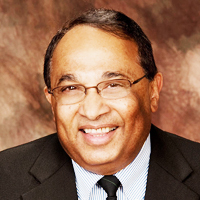Pathological Effects of Cypermethrin on the Testes and Accessory Sexual Glands of Yankasa Rams
Published on: 20th June, 2018
OCLC Number/Unique Identifier: 7795940088
An investigation into the pathological lesions of Cypermethrin on the testes, accessory sexual and pituitary glands of Yankasa rams was carried out. Sixteen Yankasa rams aged 18 - 30 months and weighing between 21.5 - 46.5kg were used. The 16 rams were divided equally into two groups (A and B) A served as the treatment group while B served as the control. Group (A) were given Cypermethrin (3%) at the dose rate of 3mg/kg (0.1ml/kg) body weight, topically. Group (B) rams were given distilled water at the same dose rate and route. These treatments were repeated every two weeks for a period of 12 weeks. The rams were sacrificed at the end of 12 weeks and the following organs (testes, pituitary, vesicular and prostate glands), were collected and weighed, gross pathological lesions were observed and photographs were taken. The samples were kept for histopathology. Results showed that there were no gross pathological lesions found on the testes, pituitary, prostate glands and the seminal vesicles of both groups. The mean weight of the pituitary gland, the prostate glands and the seminal vesicles of the treated and control groups were statistically not significant (P>0.05). No histologic lesions were found on them. The mean testicular weights of the treated (143.81±7.71g) and the control (130.43±0.63g) were significantly different (P<0.05). There was a reduced number of spermatozoa in the lumen of the seminiferous tubules of the treated group. It was concluded that Cypermethrin reduced spermatozoa in the lumen of the seminiferous tubules.
Prostate health in India (BPH & Prostate Cancer)
Published on: 3rd September, 2022
The prostate gland, found only in men, is an extremely important organ of the reproductive system, but it is not taken care of adequately, leading to prostate inflammation and benign hypertrophy or even cancer. Benign prostate enlargement compresses urine flow through the urethra, leading to uncomfortable urinary symptoms. Hyperplasia increases the risk of bladder stones, urinary tract infections, and kidney problems. In India prevalence of Benign Prostrate Hyperplasia (BPH) is around 50% of men by the age of 60 years. Studies suggest that benign prostatic hyperplasia is a result of the disproportion between oestrogen & testosterone. A higher proportion of oestrogen within the prostate boosts the growth of prostate cells. The management of BPH is streamlined in recent times and the majority are on medical treatment.Prostate cancers are one of the cancers showing a significant increase in incidence along with mouth and kidney and lung cancers among the male population. With an estimated population of 1400 million and about 98 million males over 50 years of age in mid-2022 and the average life expectancy increasing 68.4 years, has a bearing on the changing incidence and pattern of prostate cancer in the current decade in India. Based on the five population-based cancer registries in 2009-10, the age-adjusted annual incidence rates per lakh population of prostate cancers were highest in Delhi (10.2) followed by Bengaluru (8.7), Mumbai (7.3), Chennai (7) and Bhopal (6.1). Cancer can co-exist with BPH. Prostate cancer management is still in the development stage with a 5-year life expectancy of around 64%.The prostate is the second leading site of cancer among males in large Indian cities like Delhi, Kolkata, Pune, and Thiruvananthapuram, and the third leading site of cancer in cities like Bangalore and Mumbai. Despite the limitations of diagnosis, the annual cancer incidence rate ranges from 5.0-9.1 per 100,000/year, as compared to the rates in the United States and other developed countries of 110 &180 for whites and blacks respectively.This article is a review of Prostate health in India based on a personal observation of around 183 cases by the author in the last 10 years.Materials & methods: This is an observational study report of three cohorts of men across the country. The sample was of people encountering the author. The sample included i) 69 septuagenarians plus ii) 30 senior citizens aged 60 - 70 years and iii) 84 men in 40 – 60 - year age groups over the last decade. The data source was sharing annual check-up reports or consultation report in person for seeking 2nd opinion. A minimum of 2 consultations, first when diagnosed and the recent between July 2021 to June 2022.




